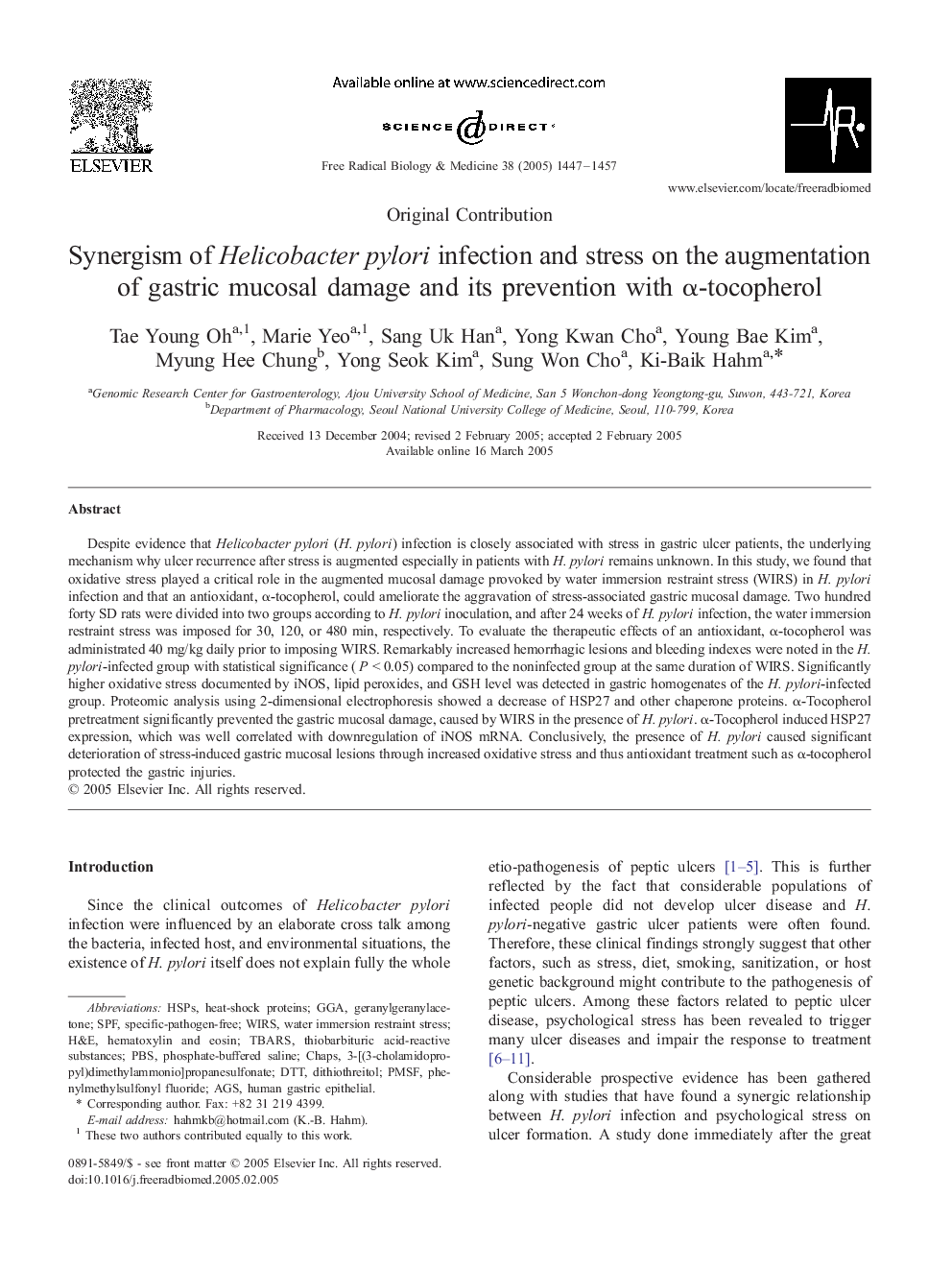| Article ID | Journal | Published Year | Pages | File Type |
|---|---|---|---|---|
| 10739487 | Free Radical Biology and Medicine | 2005 | 11 Pages |
Abstract
Despite evidence that Helicobacter pylori (H. pylori) infection is closely associated with stress in gastric ulcer patients, the underlying mechanism why ulcer recurrence after stress is augmented especially in patients with H. pylori remains unknown. In this study, we found that oxidative stress played a critical role in the augmented mucosal damage provoked by water immersion restraint stress (WIRS) in H. pylori infection and that an antioxidant, α-tocopherol, could ameliorate the aggravation of stress-associated gastric mucosal damage. Two hundred forty SD rats were divided into two groups according to H. pylori inoculation, and after 24 weeks of H. pylori infection, the water immersion restraint stress was imposed for 30, 120, or 480 min, respectively. To evaluate the therapeutic effects of an antioxidant, α-tocopherol was administrated 40 mg/kg daily prior to imposing WIRS. Remarkably increased hemorrhagic lesions and bleeding indexes were noted in the H. pylori-infected group with statistical significance (P < 0.05) compared to the noninfected group at the same duration of WIRS. Significantly higher oxidative stress documented by iNOS, lipid peroxides, and GSH level was detected in gastric homogenates of the H. pylori-infected group. Proteomic analysis using 2-dimensional electrophoresis showed a decrease of HSP27 and other chaperone proteins. α-Tocopherol pretreatment significantly prevented the gastric mucosal damage, caused by WIRS in the presence of H. pylori. α-Tocopherol induced HSP27 expression, which was well correlated with downregulation of iNOS mRNA. Conclusively, the presence of H. pylori caused significant deterioration of stress-induced gastric mucosal lesions through increased oxidative stress and thus antioxidant treatment such as α-tocopherol protected the gastric injuries.
Keywords
PBSSPFDTTWIRSAGSTBARSPMSFHSPsGeranylgeranylacetone3-[(3-cholamidopropyl)dimethylammonio]propanesulfonateGGAH&Ewater immersion restraint stressspecific-pathogen-freedithiothreitolphenylmethylsulfonyl fluoridePhosphate-buffered salinethiobarbituric acid-reactive substancesHematoxylin and EosinHeat-shock proteinsCHAPS
Related Topics
Life Sciences
Biochemistry, Genetics and Molecular Biology
Ageing
Authors
Tae Young Oh, Marie Yeo, Sang Uk Han, Yong Kwan Cho, Young Bae Kim, Myung Hee Chung, Yong Seok Kim, Sung Won Cho, Ki-Baik Hahm,
